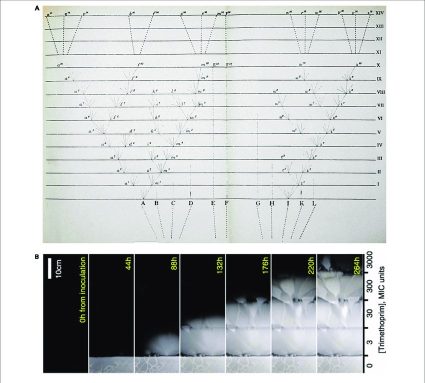(A) Darwin’s “Tree of Life” diagram from his Origin of Species (Darwin, 1860) juxtaposed with (B) a time-lapse study of bacterial growth across a step-wise concentration gradient of antibiotic (Baym et al., 2016). A video of this experiment may be accessed here: https://www.youtube.com/watch?v=plVk4NVIUh8
From DS Thaler and TP Sakmar, Archiving time series sewage samples as biological records of built environments. BMC Infectious Diseases 21(601) 2021. DOI:10.1186/s12879-021-06268-4
The regular archiving of nucleic-acid-stabilized serial samples of wastewater or sewage would provide biological time capsules that allow for retrospective searches for viruses, such as SARS-CoV-2, and allow researchers to reconstruct the temporal and spatial diffusion of disease outbreaks. PHE guest investigator David Thaler and Rockefeller University professor Thomas Sakmar describe the vision, as well as some of the practicalities, of implementing this type of biological archiving in a 2021 article in BMC Infectious Diseases, Archiving time series sewage samples as biological records of built environments.
While interest in 2021, centers overwhelmingly on SARS-CoV-2, archived samples could become valuable in many other contexts, including surveys for other infectious and chemical agents whose identity is not currently known. Archived time series of wastewater could take their place alongside other repositories from medical facilities, museums, eDNA, as well as living cell and tissue collections as biological records of the evolving Anthropocene. As analysis becomes more sophisticated and the number of targets relevant to public health expands, biological archives will directly prepare society to efficiently monitor and anticipate concerns about biologically important conditions affecting human society in the future, including a deeper historical understanding of what is unlikely to be the last pandemic.
